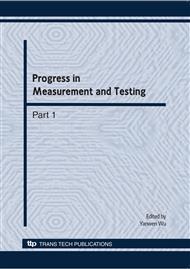p.954
p.960
p.966
p.972
p.979
p.985
p.993
p.997
p.1003
Development of a GSP Integrated Formative Assessment System on Geometric Creativity
Abstract:
A GSP integrated learning and assessment system (LAS-GSP) is developed to provide students an interactive exploration environment and on-line feedbacks on geometric problem solving. Three tasks of maximal segmentation are developed to investigate the applicability and intervention effect of the system. There are four scoring elements for students’ on line assignments: (1) systematic approaches, (2) correct solutions, (3) originality of representation, and (4) function derived. The characteristics of students’ learning progress are discussed by the scoring rubrics applied. The results suggest abstract geometric concepts can be visualized, internalized, and enhanced at an earlier age, if mind-tool can be effectively implemented.
Info:
Periodical:
Pages:
979-984
Citation:
Online since:
May 2010
Authors:
Keywords:
Price:
Сopyright:
© 2010 Trans Tech Publications Ltd. All Rights Reserved
Share:
Citation:


